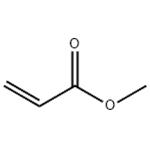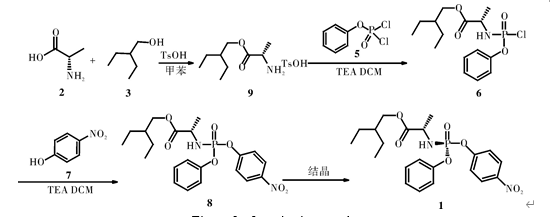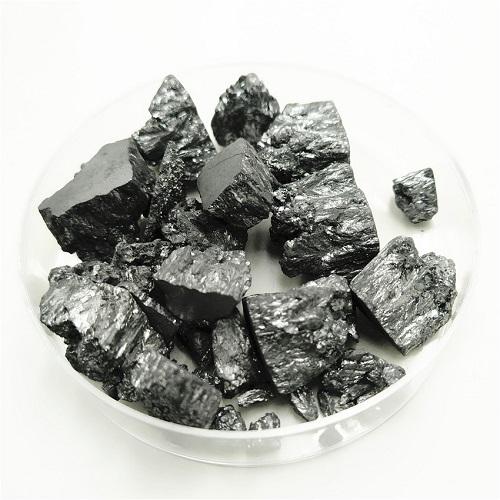Methyl acrylate
Nov 15,2021
General description
Methyl acrylate, stabilized is a colorless volatile liquid with an acrid odor. Flash point 27°F. Vapors may irritate the eyes and respiratory system. Highly toxic by inhalation, ingestion and skin absorption. Less dense than water (0.957 gm / cm3) and slightly soluble in water, hence floats on water. Vapors heavier than air.Methyl acrylate is an enoateester.
Figure 1 the molecular formula of Methyl acrylate
Application and pharmacokinetics
Methyl acrylate is an important polymer synthesis monomer, which is widely used in the production of artificial resins, adhesives, coating materials and other fields.
1.Methacrylic acid resin is also the main product of acrylic resin. Among them, polymethylmethacrylate transparent plastics (PMMA, commonly known as plexiglass or acrylic) are very important in military and civil fields. Although the dosage is small, it is irreplaceable. Because of its excellent light transmission performance, light weight, good mechanical properties and fatigue properties, and can withstand aerodynamic load and pressurization load, in the aviation field, optical grade plexiglass is widely used in the windshield hatch cover of military aircraft, side windows and portholes of transport aircraft and civil aircraft. In addition to composite materials on aircraft, Among the non-metallic materials used, another important structural material. Methacrylic acid resin can also be used as the resin of glass fiber fabric or polyester fiber fabric reinforced plastic, which is referred to as acrylate reinforced plastic for short. It is mainly used as the edge connector of aircraft plexiglass windshield and cabin cover. It plays the role of connection reinforcement and is also a load-bearing structural material. In construction, acrylic coatings, adhesives and sealing materials are used in a large amount. With the progress of Chinese residents' housing conditions and per capita living area.
2. Acrylate has a wide range of applications due to its different excellent characteristics and large market demand With the needs of radiation curing, textile industry, adhesives, coatings and other industrial fields and environmental protection in various regions of the world, the development of various functional acrylates continues to expand Acrylate emulsion polymers are widely used in textile industry because of their different properties and applications due to their differences in raw material proportioning and processing methods. Acrylate emulsion is mainly used as thickener and fabric adhesive in pigment printing. Low temperature curing fabric adhesive is widely used in China. Its main component is the copolymer of acrylate and vinyl monomer. The properties of acrylate rubber are affected by the number of alkyl carbon atoms in its main monomer alkyl acrylate. The rubber based on acrylate has good oil resistance and heat resistance; The rubber based on butyl acrylate increases the shielding effect on the ester polar group due to the increase of the number of alkyl carbon atoms, so the water resistance is improved. At the same time, due to the shielding effect, the intermolecular force of rubber is weakened and the internal plasticity is increased, so that the brittleness temperature is reduced and the cold resistance is better. If the above two monomers are used together, a rubber between the two properties can be obtained.
Synthesis
At present, the industrial production method of methyl acrylate is perpropylene or propane oxidation. However, both propylene and propane are derived from non-renewable fossil resources. With the increasing depletion of fossil resources, the cost of producing methyl acrylate from propylene will gradually increase. Therefore, the new synthetic route of methyl acrylate needs to be developed urgently. Both methyl acetate and methanol are bulk chemicals, and their biotechnology has matured. In addition, methyl acetate is a by-product in the polyterephthalic acid and polyvinyl alcohol industries, and the development of synthetic routes using it as a raw material has great economic advantages. Therefore, the synthesis process of preparing methyl acrylate with methyl acetate and methanol as raw materials has the advantages of cheap and easy-to-obtain raw materials, wide sources, and short process flow.
On the basis of laboratory system research, through independent innovation, we organically combined the methanol oxidation process with the Aldol condensation process of methyl acetate and formaldehyde, and realized the synthesis route of methyl acrylate using methyl acetate and methanol as raw materials. Development. When the molar ratio of methyl acetate to methanol is 1/1 and the reaction temperature is 340 ℃, the conversion rate of methyl acetate can reach about 30%, and the total selectivity of acrylic acid and methyl acrylate is higher than 90%.[3]
References
1.Guironnet D., Caporaso L. & Neuwald B. et al., "Mechanistic Insights on Acrylate Insertion Polymerization," Journal of the American Chemical Society, Vol.132, No.12(2010), pp.4418-4426.
2.Xu M., Yu F. & Li P. et al., "Enhancing Chain Initiation Efficiency in the Cationic Allyl-Nickel Catalyzed (Co)Polymerization of Ethylene and Methyl Acrylate," Inorganic Chemistry, Vol.59, No.7(2020), pp.4475-4482.
3.Preparation technology of methyl acrylate.
- Related articles
- Related Qustion
N-[(S)-(4-nitrophenoxy)phenoxyphosphinyl]-L-Alanine 2-ethylbutyl ester is the 6th synthesis intermediate of remdesivir. Remdesivir was developed by Gilead of the United States.....
Nov 15,2021Organic Synthesis IntermediateThe word arsenic has several derivations including from the Syriac word (al) zarniqa, the Persian word zarnikh,and the Greek word arsenikon (Arsεnikón). It is also related to the similar Greek word arsenikos, meaning ‘masculine’ or ‘potent.....
Nov 16,2021Inorganic chemistryMethyl acrylate
96-33-3You may like
- Methyl Acrylate
-

- $0.00 / 200kg
- 2024-10-29
- CAS:96-33-3
- Min. Order: 20kg
- Purity: 99.5%
- Supply Ability: 20 tons






